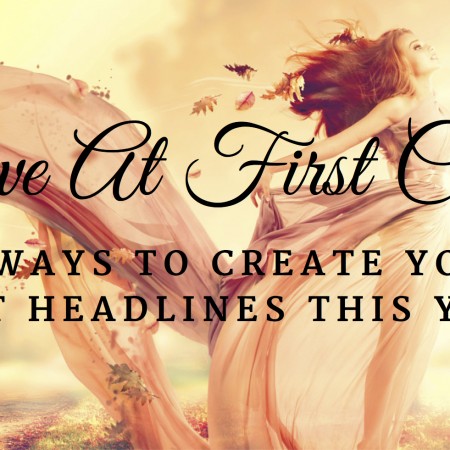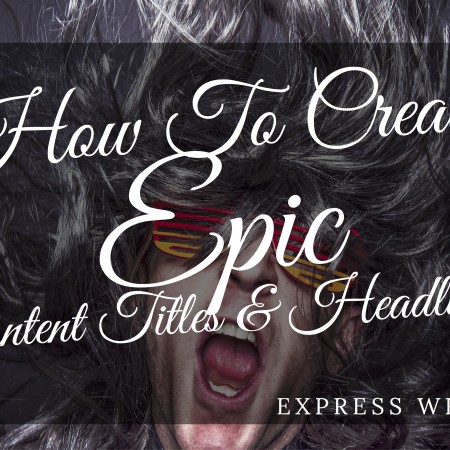Love at First Click: 10 Ways To Create Your Best Headlines This Year
Of all the people that visit your blog, 80% of them will read your headline: and only 20% of them will go on to read your body copy. While that may seem like a dismal statistic, it holds some serious power for the people who get headlines right. The reason for this is that when you craft great headlines, you boost your chances that people will go on to read the rest of your content. But how exactly do you craft great headlines? Here’s what you need to know. Get your free resource: 120 Power Words for Your Headlines & 10 Top CTA Phrases The Lowdown on Creating Headlines: It’s an Art If you want great results for your content, you can’t expect to just whip out headlines left and right. In fact, QuickSprout recommends spending half the time you spent creating your content creating a headline. While this may seem overkill, there’s no underestimating the importance of headlines. Part of this is due to the fact that there are upwards of 2 million blog posts, 864 thousand hours of vide, 294 billion emails, and 400 million tweets being created on a daily basis. With that much content on the web, it’s clear that a headline is one of your only chances to grab a reader who’s distracted by a million other things and say, “Hey! Click here.” When you get it right, you have the potential to boost your traffic, earn more readers, and rise to web fame. But how do you do it well? Here are 10 tips to help you get started. 10 Tips for Headlines So Good They’ll Break the Internet Writing great headlines is an art form. There are several tried-and-true formulas that work well every time and, as a content creator, it’s important to get familiar enough with these that you can include them in your arsenal. Here are some of our favorites: 1) Use numbers “9 Facts about Elon Musk, according to Elon Musk,” “20 Ways to Have the Best Day Ever,” “5 Fitness Tips to Help You Rock the New Year” …. what do these headlines have in common? They all use numbers to draw readers in. According to a study conducted by Moz, 36% of readers prefer numbered list headlines. And according to the BBC, this is because list posts tell us exactly what we’re getting. Plus, list posts are easy to read, easy to skim, and easy to draw value from. This helps readers feel like they’re getting a great deal and creates content that is highly shareable. 2) Address the reader “Have you Ever Wanted Anything as Much as This Cat Wants This Laser?” “Don’t Know What to get your Father for Father’s day? We can Help.” “Your Complete Survival Guide to the Holiday Madness.” According to the aforementioned Moz study, 21% of readers prefer headlines like these. The reason is simple: when a headline addresses the reader directly, it breaks the previously-held barriers between a writer and a reader, creating a more personalized experience that’s easier for the reader to relate to. 3) Offer valuable information Imagine this: you’re having trouble setting up your new Bluetooth speaker. You head to the internet to search for answers and several results pop up. There are Q&A boards, a lengthy description of your Bluetooth speaker, and an article titled “How to Configure Your Bluetooth Speaker Without Ripping Your Hair Out.” Which one are you going to click? Chances are, you’ll choose the how-to article. The reason for this is because the how-to article offers immediately actionable information in a simple-to-read package, which saves you from combing through Q&A boards or scrolling endlessly, in search of answers to your pressing questions. 4) Steer clear of superlatives “The 13 Best Ways to Create the Most Perfect, Smartest Kid Ever.” Is that headline a little too superlative-dense for you? We thought so. Moz recently surveyed respondents for their tolerance to superlatives. What they found was that about 51% of them were more inclined to click on a headline that featured only 0-1 superlatives. In other words, most readers prefer a headline that is descriptive, yet understated. The reason for this may be that, most of the time, superlative-dense headlines feel a little too unbelievable. For best results, and to attract the most readers, keep it toned-down, believable, and clear. 5) …. Or go all out In that same Moz survey, a full ¼ of respondents went the other way entirely. Instead of clicking on the understated headline, they leaned toward headlines that were packed with up to 4 superlatives. The takeaway? When crafting your headlines, readers either want you to keep it simple or to go big. Just remember that when using superlatives, you’ll want to keep them positive (think “perfect, largest, funniest, strongest, best, fastest, easiest”, etc.) in order to craft strong, emotionally appealing headlines. 6) Offer the best information Today’s readers area all about efficiency. They want to know the best way to do something in the shortest amount of time. This is part of the reason sites like Lifehacker have become so incredibly popular. Because of this, headlines that offer “the best” path to anything are much more clickable than those that beat around the bush. Take, for example, the recent New York Magazine article titled “The Best Ways to Fake Clean a House.” Who wouldn’t click that headline? 7) Back it up While being the best and piling on the superlatives is all well and good, it’s not worth much if you’re just making it up. For this reason, it’s important to back your outlandish claims up. Take the recent Lifehack article titled “10 Scientifically Proven Ways to Stay Happy All the Time.” It has over 5,000 shares and we’re willing to bet a good deal of that is because the words “scientifically proven” back the claim up enough that people find it immediately trustworthy. 8) Get real Just like people love authoritative information, they also love authentic information, … Read more




